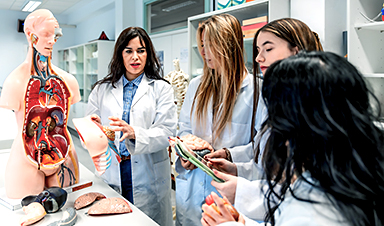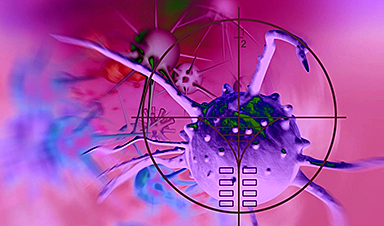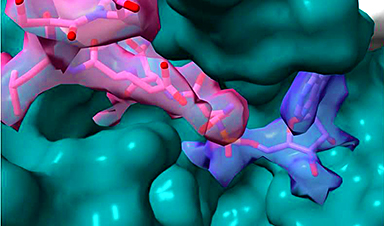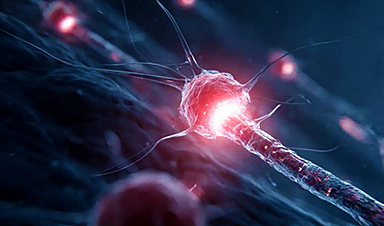New research explores the adaptation strategies of polyploid plants, offering insights for cancer treatment and enhancing crop resilience against environmental challenges.
Whole genome duplication (WGD) occurs across all kingdoms of life. While it is most prevalent in plants, it also takes place in certain highly aggressive cancers. Following WGD, a cell acquires additional sets of genomes and is referred to as polyploid.
Most of our major crops are also polyploid, including, wheat, apples, bananas, oats, strawberries, sugar, and brassicas like broccoli and cauliflower. Polyploidy also occurs in some of the most aggressive gliomas (a brain cancer) and is associated with cancer progression. In general, polyploidy has been associated with robustness (as in crops) and adaptation to the environment (as in cancers that metastasize).
Because polyploids have more genomes to manage, the doubling of these genomes can be a weakness, so it is important to understand what factors stabilize young polyploids and how genome-doubled populations evolve.
In this new study, published in Cell Reports, experts from the University of Nottingham’s School of Life Sciences look at how three successfully polyploid plant species evolved to manage the extra DNA and whether they each did this differently or all the same way.
Research Insights from Polyploids
Professor Levi Yant, who led the study said: “Understanding the range of issues that face polyploids may help us to understand why some succeed while others don’t. We see that successful polyploids overcome specific issues with DNA management and we focus on exactly what their ‘natural solutions’ are.
“In our study, we looked at three instances where species have adapted to ‘polyploid life’ and not only survived, but even thrived. Then we looked at whether they used the same molecular solutions to survive. Surprisingly, they did not.”
The researchers found that the clearest signal of rapid adaptation to the polyploid state came from the CENP-E molecule, which is an exact molecule that other groups recently found to be an Achilles heel for polypoid cancers, and is a promising therapeutic target to kill the cancers. The next clearest signal came from ‘meiosis genes’, which Professor Yant notes are turned on in many cancers, whereas they are turned off in nearly all normal cells.
Implications for Cancer Research and Agriculture
“We discovered signals of rapid adaptation to the WGD state in the same molecular networks, and in the case of CENP-E, the exact molecule that is specifically important to polyploid cancers,” continues Professor Yant.
“This WGD gives cancer a short-term advantage over most therapies, but targeting that exact molecule, CENP-E, specifically kills the polyploid cancer. This is a striking example of evolutionary repetition (or convergence) from completely different directions, but to the same adaptive hurdle. We can now take this model that adapts well to polyploidy and that can inform our thinking about certain types of cancer.”
The findings of the study could impact in better understanding of how certain polyploid cancers, such as gliomas (brain cancers) are able to use polyploidy to progress, and what molecules can be targeted as part of any therapy to ‘kill’ the cancer cells.
More broadly, the study is important evidence that shows that mining evolutionary biology for these natural solutions can inform future therapies. Finally, the study also illustrates different ways in the future that we can better engineer our many polyploid crops to be more resilient to certain cataclysmic events – such as climate change.
Reference: “Kinetochore and ionomic adaptation to whole-genome duplication in Cochlearia shows evolutionary convergence in three autopolyploids” by Sian M. Bray, Tuomas Hämälä, Min Zhou, Silvia Busoms, Sina Fischer, Stuart D. Desjardins, Terezie Mandáková, Chris Moore, Thomas C. Mathers, Laura Cowan, Patrick Monnahan, Jordan Koch, Eva M. Wolf, Martin A. Lysak, Filip Kolar, James D. Higgins, Marcus A. Koch and Levi Yant, 7 August 2024, Cell Reports.
DOI: 10.1016/j.celrep.2024.114576
The study was funded by the European Research Council, BBSRC, and the Leverhulme Trust.
News
Repurposed drugs could calm the immune system’s response to nanomedicine
An international study led by researchers at the University of Colorado Anschutz Medical Campus has identified a promising strategy to enhance the safety of nanomedicines, advanced therapies often used in cancer and vaccine treatments, [...]
Nano-Enhanced Hydrogel Strategies for Cartilage Repair
A recent article in Engineering describes the development of a protein-based nanocomposite hydrogel designed to deliver two therapeutic agents—dexamethasone (Dex) and kartogenin (KGN)—to support cartilage repair. The hydrogel is engineered to modulate immune responses and promote [...]
New Cancer Drug Blocks Tumors Without Debilitating Side Effects
A new drug targets RAS-PI3Kα pathways without harmful side effects. It was developed using high-performance computing and AI. A new cancer drug candidate, developed through a collaboration between Lawrence Livermore National Laboratory (LLNL), BridgeBio Oncology [...]
Scientists Are Pretty Close to Replicating the First Thing That Ever Lived
For 400 million years, a leading hypothesis claims, Earth was an “RNA World,” meaning that life must’ve first replicated from RNA before the arrival of proteins and DNA. Unfortunately, scientists have failed to find [...]
Why ‘Peniaphobia’ Is Exploding Among Young People (And Why We Should Be Concerned)
An insidious illness is taking hold among a growing proportion of young people. Little known to the general public, peniaphobia—the fear of becoming poor—is gaining ground among teens and young adults. Discover the causes [...]
Team finds flawed data in recent study relevant to coronavirus antiviral development
The COVID pandemic illustrated how urgently we need antiviral medications capable of treating coronavirus infections. To aid this effort, researchers quickly homed in on part of SARS-CoV-2's molecular structure known as the NiRAN domain—an [...]
Drug-Coated Neural Implants Reduce Immune Rejection
Summary: A new study shows that coating neural prosthetic implants with the anti-inflammatory drug dexamethasone helps reduce the body’s immune response and scar tissue formation. This strategy enhances the long-term performance and stability of electrodes [...]
Scientists discover cancer-fighting bacteria that ‘soak up’ forever chemicals in the body
A family of healthy bacteria may help 'soak up' toxic forever chemicals in the body, warding off their cancerous effects. Forever chemicals, also known as PFAS (per- and polyfluoroalkyl substances), are toxic chemicals that [...]
Johns Hopkins Researchers Uncover a New Way To Kill Cancer Cells
A new study reveals that blocking ribosomal RNA production rewires cancer cell behavior and could help treat genetically unstable tumors. Researchers at the Johns Hopkins Kimmel Cancer Center and the Department of Radiation Oncology and Molecular [...]
AI matches doctors in mapping lung tumors for radiation therapy
In radiation therapy, precision can save lives. Oncologists must carefully map the size and location of a tumor before delivering high-dose radiation to destroy cancer cells while sparing healthy tissue. But this process, called [...]
Scientists Finally “See” Key Protein That Controls Inflammation
Researchers used advanced microscopy to uncover important protein structures. For the first time, two important protein structures in the human body are being visualized, thanks in part to cutting-edge technology at the University of [...]
AI tool detects 9 types of dementia from a single brain scan
Mayo Clinic researchers have developed a new artificial intelligence (AI) tool that helps clinicians identify brain activity patterns linked to nine types of dementia, including Alzheimer's disease, using a single, widely available scan—a transformative [...]
Is plastic packaging putting more than just food on your plate?
New research reveals that common food packaging and utensils can shed microscopic plastics into our food, prompting urgent calls for stricter testing and updated regulations to protect public health. Beyond microplastics: The analysis intentionally [...]
Aging Spreads Through the Bloodstream
Summary: New research reveals that aging isn’t just a local cellular process—it can spread throughout the body via the bloodstream. A redox-sensitive protein called ReHMGB1, secreted by senescent cells, was found to trigger aging features [...]
AI and nanomedicine find rare biomarkers for prostrate cancer and atherosclerosis
Imagine a stadium packed with 75,000 fans, all wearing green and white jerseys—except one person in a solid green shirt. Finding that person would be tough. That's how hard it is for scientists to [...]
Are Pesticides Breeding the Next Pandemic? Experts Warn of Fungal Superbugs
Fungicides used in agriculture have been linked to an increase in resistance to antifungal drugs in both humans and animals. Fungal infections are on the rise, and two UC Davis infectious disease experts, Dr. George Thompson [...]





















